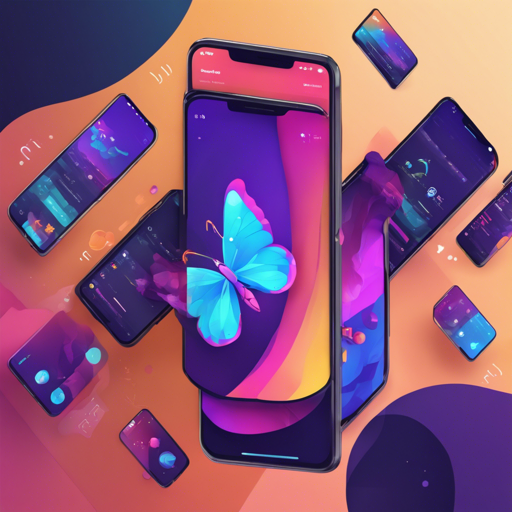The world of Flutter has just gotten more exciting with the Animated Theme Switcher! This library allows you to add beautiful animations when switching themes in your Flutter application, enhancing user experience with smooth transitions that make your app feel more dynamic. Ready to dive into this vibrant world? Let’s get started!
Getting Started
Before we jump into the implementation, ensure you have the Animated Theme Switcher library ready to use within your Flutter project.
dependencies:
animated_theme_switcher: ^2.0.8Simply add this line to your pubspec.yaml file under dependencies, and you will have access to all its functionalities.
How to Use the Animated Theme Switcher
Now that everything is set up, let’s layer out the steps required to implement the Animated Theme Switcher effectively:
1. Import the Package
Import the library in your Dart file:
import 'package:animated_theme_switcher/animated_theme_switcher.dart';2. Wrap MaterialApp in a ThemeProvider
This is where the magic begins! You will need to wrap your MaterialApp with the ThemeProvider widget.
ThemeProvider(
initTheme: initTheme,
builder: (context, myTheme) {
return MaterialApp(
title: 'Flutter Demo',
theme: myTheme,
home: MyHomePage(),
);
},
);In case you simply want to provide a theme without a full app structure:
ThemeProvider(
initTheme: initTheme,
child: SomeCoolPage(),
);3. Create a ThemeSwitchingArea
Wrap the area where you want theme switching to occur with the ThemeSwitchingArea widget:
ThemeSwitchingArea(
child: Builder(builder: (context) {
return ...; // Your widget here
}),
);4. Add Theme Switcher
Each switcher must be wrapped with a ThemeSwitcher builder to change themes dynamically:
ThemeData newTheme = ThemeData(primaryColor: Colors.amber);
ThemeSwitcher(
builder: (context) {
return GestureDetector(
onTap: () {
ThemeSwitcher.of(context).changeTheme(theme: newTheme, isReversed: false);
},
child: ... // Your switcher UI here
);
},
);5. Optional Clipper for Customization
If you want to customize the appearance of your theme switcher, you can use the optional clipper parameter:
ThemeSwitcher(
clipper: ThemeSwitcherBoxClipper(),
builder: (context) {
return ...; // Your widget here
},
);Troubleshooting
While implementing the Animated Theme Switcher, you may encounter some common issues. Here are a few troubleshooting tips:
- Theme not changing: Ensure that you’ve correctly provided the
ThemeSwitcherwith the appropriate theme parameters. - Animations missing: Double-check that you are using the correct widgets, as missing the
ThemeSwitchingAreacan lead to issues with the animations. - App crashes: If your app crashes on startup, verify that you have the correct version of the
animated_theme_switcherlibrary and any other dependencies are up to date.
For more insights, updates, or to collaborate on AI development projects, stay connected with fxis.ai.
Final Notes
This package is not intended to persist the selected theme on the local device. If you wish to save the theme settings for future launches, refer to the special example on GitHub on how to implement it using shared_preferences.
Moreover, if you’re developing for the web, remember to use the CanvasKit rendering engine to ensure full functionality of the Animated Theme Switcher.
More information can be found here.
Conclusion
With the Animated Theme Switcher, you’re not just providing a basic theme option, but creating an engaging user experience that feels responsive and lively. So go ahead, implement these steps and watch your Flutter app transform into something truly spectacular!
At fxis.ai, we believe that such advancements are crucial for the future of AI, as they enable more comprehensive and effective solutions. Our team is continually exploring new methodologies to push the envelope in artificial intelligence, ensuring that our clients benefit from the latest technological innovations.

